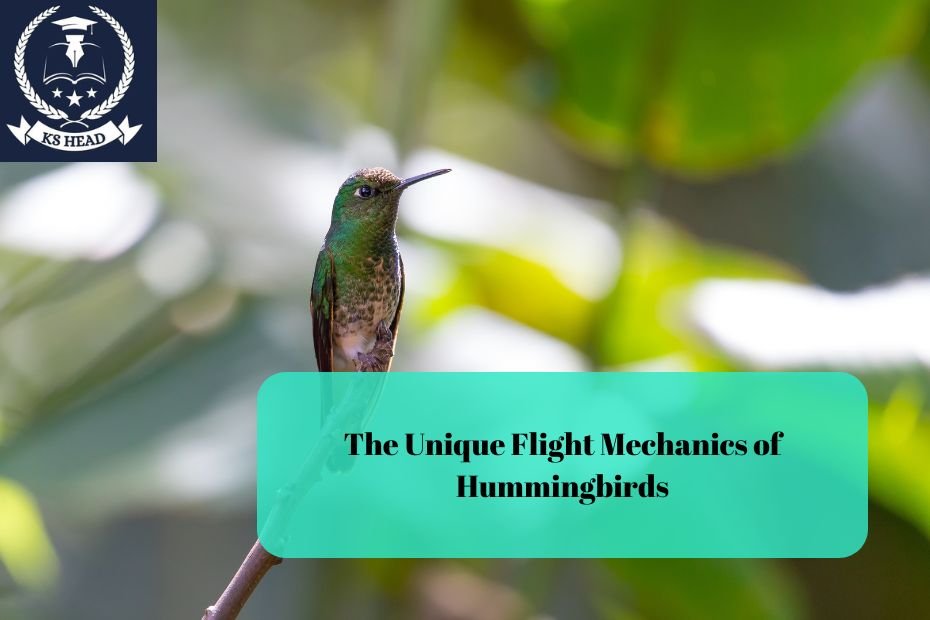Hummingbirds are among the most remarkable aviators in the animal kingdom, showcasing extraordinary flight mechanics that allow them to perform incredible aerial maneuvers. Their unique adaptations for flight not only enable them to hover, dart, and fly backward but also contribute to their survival and feeding strategies. This article explores the unique flight mechanics of hummingbirds, delving into their anatomy, flight patterns, and the physics behind their remarkable abilities.
Overview of Hummingbird Flight
Hummingbirds belong to the family Trochilidae and are found primarily in the Americas. With over 300 species, they are characterized by their small size, vibrant colors, and iridescent feathers. One of the most notable features of hummingbirds is their ability to hover in place. This is largely due to their specialized flight mechanics, which involve unique wing structures, powerful muscles, and advanced neural control.
1. Anatomy of Hummingbird Wings
The flight mechanics of hummingbirds are rooted in their unique wing anatomy:
Wing Structure
- Shape and Size: Hummingbird wings are long and narrow, designed for rapid flapping. The aspect ratio, or the ratio of wing length to wing width, is higher in hummingbirds compared to other birds. This allows for efficient lift and maneuverability.
- Flexible Wing Joints: Hummingbirds have a unique ball-and-socket joint at the shoulder, enabling them to rotate their wings in a full circle. This flexibility allows them to generate lift during both the upstroke and downstroke of their wing beats.
- Wing Bones: The humerus, radius, and ulna in hummingbird wings are adapted for flight, providing a lightweight yet sturdy framework for wing movement.
Muscle Composition
- Powerful Flight Muscles: Hummingbirds possess large breast muscles (pectoralis major) that account for a significant portion of their body weight. These muscles contract rapidly, allowing for the high-frequency wing beats characteristic of hummingbird flight.
- Fast-Twitch Muscle Fibers: The majority of muscle fibers in hummingbird wings are fast-twitch fibers, which are optimized for quick bursts of energy. This enables them to flap their wings at an astounding rate of up to 80 beats per second.
2. Hovering Flight
One of the most impressive aspects of hummingbird flight is their ability to hover. This capability is essential for feeding, as it allows them to access nectar from flowers without needing to perch. The mechanics behind hovering involve a combination of lift generation and thrust.
Lift Generation
- Wing Beats: During hovering, a hummingbird’s wings move in a figure-eight pattern, which maximizes lift. The wings generate lift on both the upstroke and downstroke, creating a continuous upward force.
- Angle of Attack: Hummingbirds adjust the angle of their wings to optimize lift. By angling their wings downward during the upstroke and upward during the downstroke, they can maintain a stable hover.
Thrust and Control
- Forward and Backward Flight: To move forward, hummingbirds tilt their wings slightly forward during the downstroke. Conversely, to fly backward, they reverse the angle, allowing them to push against the air in the opposite direction.
- Stability and Maneuverability: Hummingbirds use their tail feathers to help stabilize their flight. By spreading and angling their tails, they can adjust their center of gravity, enhancing their ability to hover and change direction rapidly.
3. High-Speed Flight
Hummingbirds are not only adept at hovering but also capable of impressive speed during flight. Some species, such as the Anna’s hummingbird, can reach speeds of up to 60 miles per hour in short bursts.
Flight Mechanics at High Speeds
- Wing Flapping: When flying at high speeds, hummingbirds increase their wingbeat frequency and maintain a more horizontal wing position. This maximizes thrust and reduces drag, allowing for faster flight.
- Aerodynamic Adaptations: Hummingbirds have a streamlined body shape, reducing air resistance. Their feathers are also structured to minimize turbulence, enhancing their speed and agility in the air.
4. Unique Aerial Maneuvers
Hummingbirds exhibit a wide range of aerial maneuvers that showcase their flight capabilities. These include:
Agile Turns and Loops
Hummingbirds can execute sharp turns and loops, enabling them to navigate through dense vegetation and evade predators. They achieve this by quickly changing the angle of their wings and adjusting their tail feathers for balance.
Reverse Flight
Unlike most birds, hummingbirds can fly backward. This ability is particularly useful when feeding on flowers, as it allows them to retract from a flower without losing altitude. The mechanics behind reverse flight involve a combination of wing angle adjustments and rapid flapping.
Diving and Ascending
Hummingbirds can dive and ascend with impressive speed. During a dive, they tilt their bodies forward, maximizing aerodynamic efficiency. To ascend quickly, they flap their wings vigorously while adjusting their body position to maintain lift.
5. The Role of Neurology in Flight
The flight mechanics of hummingbirds are not solely based on physical adaptations; their advanced neurological systems also play a critical role.
Brain Structure
Hummingbirds possess relatively large brains for their body size, particularly in regions responsible for motor control and spatial navigation. This allows for rapid processing of sensory information and precise control of flight movements.
Reflexes and Coordination
The neural control of hummingbird flight involves rapid reflexes and excellent coordination. Hummingbirds can make quick adjustments to their flight paths based on visual and environmental cues, allowing for agile and responsive maneuvers.
6. Energy Management
Hummingbird flight requires an immense amount of energy, especially during hovering and high-speed flight. To sustain their energy levels, hummingbirds have developed several adaptations:
High Metabolic Rate
Hummingbirds have one of the highest metabolic rates of any animal. To meet their energy demands, they must consume large quantities of nectar, which provides quick energy in the form of sugars.
Efficient Feeding Habits
Hummingbirds visit numerous flowers each day, using their long, specialized tongues to extract nectar efficiently. Their feeding habits are crucial for maintaining the energy levels needed for their extraordinary flight capabilities.
Conclusion
The unique flight mechanics of hummingbirds are a testament to nature’s ingenuity. Their specialized wing anatomy, powerful muscles, and advanced neurological control allow them to perform breathtaking aerial maneuvers, from hovering in place to executing rapid flights. Understanding the intricacies of hummingbird flight provides insight into their evolutionary adaptations and highlights the importance of preserving their habitats. By creating hummingbird-friendly gardens and supporting conservation efforts, we can help ensure that these remarkable aviators continue to grace our skies for generations to come.
FAQs
1. Why can hummingbirds hover while most birds cannot?
Hummingbirds can hover due to their unique wing structure, allowing them to generate lift on both the upstroke and downstroke of their wing beats.
2. How fast can hummingbirds fly?
Some species of hummingbirds can reach speeds of up to 60 miles per hour in short bursts, particularly during mating displays.
3. What is the average wingbeat frequency of hummingbirds?
Hummingbirds typically beat their wings at a frequency of 50 to 80 beats per second, depending on the species and activity.
4. What adaptations allow hummingbirds to sustain their high energy levels?
Hummingbirds have a high metabolic rate and consume large amounts of nectar to meet their energy demands, allowing them to maintain their extraordinary flight capabilities.
5. Can hummingbirds fly backward?
Yes, hummingbirds are unique among birds in their ability to fly backward, which they accomplish by reversing the angle of their wings during flight.

